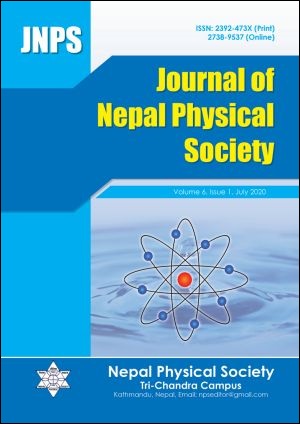Quantum Chemical Calculation and DFT Study of Sitagliptin: Insight from Computational Evaluation and Docking Approach
DOI:
https://doi.org/10.3126/jnphyssoc.v6i1.30553Keywords:
Sitagliptin, Chemical reactivity, DFT, Hydrogen bonding, Molecular docking, NLOAbstract
This study aims to explore the structural and chemical behavior of sitagliptin using density functional theory (DFT). The chemical reactivity has been studied in terms of MEP, HOMO-LUMO energy gap, Hirshfeld charge, and global and local reactivity descriptors. Thermodynamic parameters like entropy, enthalpy and specific heat capacity and, nonlinear optical (NLO) properties have been analysed. Higher value of the first hyperpolarizability than that of urea show its potential use as NLO material. Intra-molecular Hydrogen bonding and topological parameters at the bond critical point (BCP) of title molecule have been studied by using the quantum theory of atoms in molecules (QTAIM) approach. The bond of 2.3777 Å between H42…N11 is noticed to be strongest one. The pharmacological behavior and protein-ligand interaction of the title molecule have been investigated in terms of drug-likeness and molecular docking which motivates that the amine and carbonyl group bind with the amino acid of the protein.
Downloads
Downloads
Published
How to Cite
Issue
Section
License
All right reserved. No part of this Journal may be reproduced in any form or by any electronic or mechanical means, including information storage and retrieval system, without permission in writing from the publisher, except by a reviewer who may quote brief passage in a review. The views and interpretation in this journal are those of author(s) and they are not attributable to the NPS.




